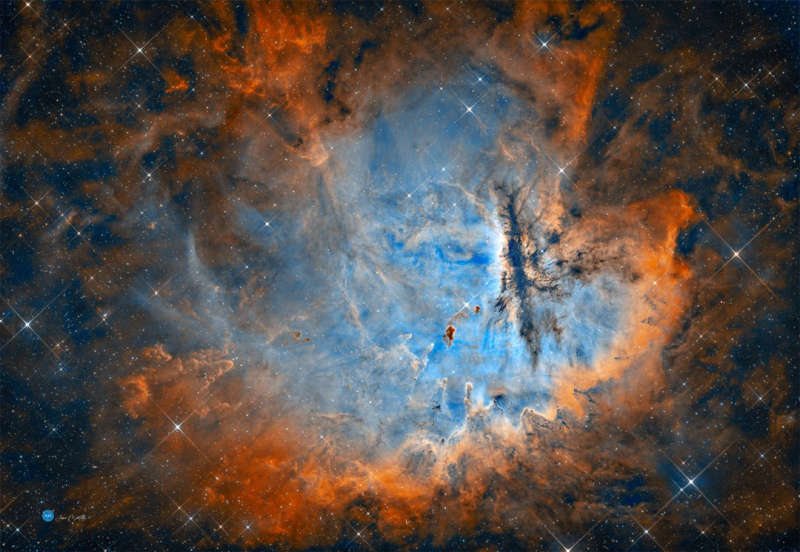
|
Credit & Copyright: Juan Montilla
(AAE)
Explanation:
You'd think the Pacman Nebula would be eating stars, but actually it is forming them.
Within
the nebula, a cluster's young, massive stars are powering
the pervasive nebular glow.
The eye-catching shapes looming in the featured
portrait of NGC 281 are sculpted dusty columns and dense
Bok globules
seen in silhouette, eroded by intense, energetic winds and
radiation
from the hot cluster stars.
If they survive long enough, the
dusty structures could also be sites of future star formation.
Playfully called the
Pacman Nebula because of its overall shape,
NGC 281 is about 10,000 light-years away in the constellation
Cassiopeia.
This sharp composite image was
made through
narrow-band filters in
Spain in mid 2024.
It combines emissions from the nebula's hydrogen
and oxygen atoms to
synthesize red, green, and blue colors.
The scene spans well over 80
light-years at the estimated distance of
NGC 281.
|
January February March April May June July August September October November December |
| |||||||||||||||||||||||||||||||||||||||||||||||||||||||
NASA Web Site Statements, Warnings, and Disclaimers
NASA Official: Jay Norris. Specific rights apply.
A service of: LHEA at NASA / GSFC
& Michigan Tech. U.
Based on Astronomy Picture
Of the Day
Publications with keywords: NGC 281 - star formation
Publications with words: NGC 281 - star formation
See also:
- APOD: 2025 July 10 Á Lynds Dark Nebula 1251
- APOD: 2025 June 23 Á W5: Pillars of Star Formation
- APOD: 2025 April 28 Á Gum 37 and the Southern Tadpoles
- APOD: 2024 November 18 Á Stars and Dust in the Pacman Nebula
- APOD: 2024 October 22 Á M16: Pillars of Star Creation
- Star Factory Messier 17
- APOD: 2024 August 19 Á IC 5146: The Cocoon Nebula
